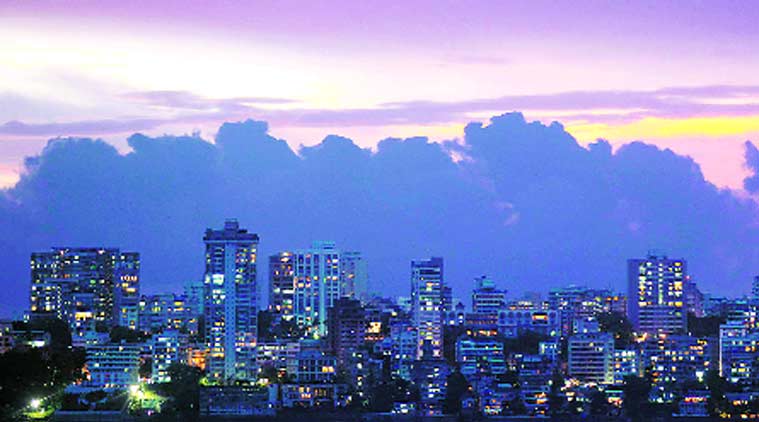Explained: How safe are the 3,400 highrises in Delhi, Mumbai?
‘No 50-storey building in the world has survived a major earthquake, even after adhering to norms’.
 ‘No 50-storey building in the world has survived a major earthquake, even after adhering to norms’.
‘No 50-storey building in the world has survived a major earthquake, even after adhering to norms’.With its textile mills and workers’ quarters, until two decades ago, the 2.4 sq km sprawl of Girangaon typified the lowrise skyline of Mumbai. Today, this pocket, which accounts for 0.05 per cent of the Mumbai Metropolitan Region (MMR), houses 10 per cent of its residential highrises — including several pencil-like structures over 50 storeys tall — flanking narrow, congested lanes.
The earthquake devastation in Nepal has spurred renewed concern over the islands of highrises in the MMR and National Capital Region (NCR). Data for the last eight years, available with the real estate research agency Liases Foras, shows that 1,700-plus residential buildings of 20 storeys or higher have mushroomed in each of these regions.
 Highrises built in MMR & NCR since 2007*
Highrises built in MMR & NCR since 2007*The NCR is in Seismic Zone 4, where an earthquake of “severe intensity” may strike. MMR is in Zone 3, prone to shocks of “moderate intensity”. While urban local bodies must ensure compliance with the Bureau of Indian Standards’ quake-resistant designs, the guidelines come with the disclaimer that they are not foolproof against structural damage from moderate to heavy shocks.
“There is no case in the world where a 50-storey tower has survived an earthquake despite adhering to all norms,” former IIT-B geologist V Subramanyan said. He cited a study by University of Pennsylvania mathematician Chris Rorres which showed that skyscrapers impacted by an earthquake do not sway and return to their original positions.
[related-post]
“They remain permanently tilted. There is a certain width-height ratio which, if exceeded, renders a structure unstable after it is hit by an earthquake of over 6 magnitude. Tilted buildings cannot be occupied, and are as good as collapsed structures,” he added.
Subramanyan said that several modest-sized seven storey structures remain tilted in Bhuj, 20 km from the epicentre of the 2001 Gujarat earthquake of 7.7 magnitude.
However, Manoj Daisaria, former president of the Practising Engineers, Architects & Town Planners’ Association, said quake-resistance measures were followed in highrise construction, and while “glass panels might shatter or the building might develop some cracks, the structure itself won’t give way”.
While the NCR has only six structures towering over 50 storeys, the MMR has 67, mainly in the erstwhile mill land belt. Subramanyan said that while Mumbai is prone to shocks of 6.2-6.5 magnitude, just 60 km south lies Alibaug, which is in Zone 4, and can be hit by 7-plus shocks. “In slim highrises, top floors can break away during such a quake. It is prudent to restrict the height of buildings to 70 m, or 22 floors,” he said.
- 01
- 02
- 03
- 04
- 05






































